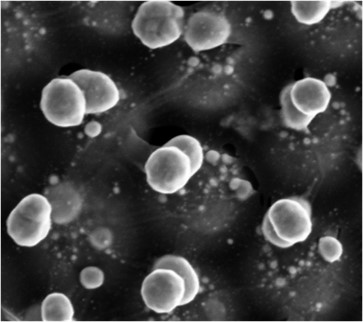
Plasmonics refers to optically excited coherent electron oscillations in metallic nanoparticles (NPs) that can have strong resonances in specific regions of the electromagnetic spectrum. Using a versatile fabrication strategy, we showed multiple ways in which plasmonic nanoparticles can be integrated with each other in 3D, which led to development of promising nanophotonic systems (metamaterials), ranging from chiro-plasmonic substrates with very strong chiro-optical response in the visible to development of 2D material-plasmonic hybrid photodetectors and single photon emitters of record high performance. A particular highlight has been the development of graphene separated (atomic dimensions) plasmonic dimers which has resulted in ultrahigh field confinement and photoresponse enhancement.
Very recently, we integrated plasmonic near field enhancement with the magnetic nanoswimmers, thereby developing the first mobile nanotweezers. These tweezers allow optically controlled pick-up, transport, and release of colloidal cargo, including living bacteria and fluorescent nanodiamonds, with a speed and accuracy not possible with any other existing technology. In parallel, we developed another technology that allows the same but with optical control alone. These two tweezer technologies are guaranteed to play a significant role in future microfluidic technologies, especially in applications that require precise nanoscale control. A particularly promising direction of these optical nanomanipulation technologies is in manipulation of sub-100 nm colloids, including live bacteria, virus etc., that can be trapped, transported, and sorted at biologically benign optical powers.
The integration of fluorescent nanodiamonds containing NV centres with the mobile nanotweezers has led to interesting quantum technologies, comprising of sensing and emission properties of the diamonds with precise spatial control. This is currently one of the major focus of our work, along with development of plasmonics-sensitized photodetectors and emitters.